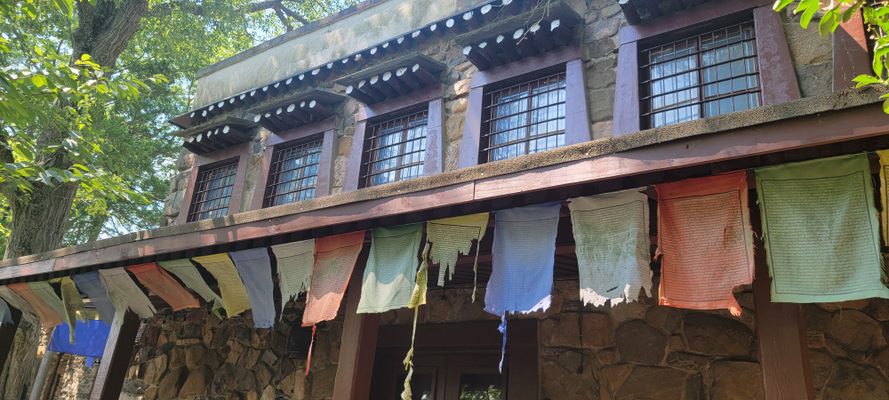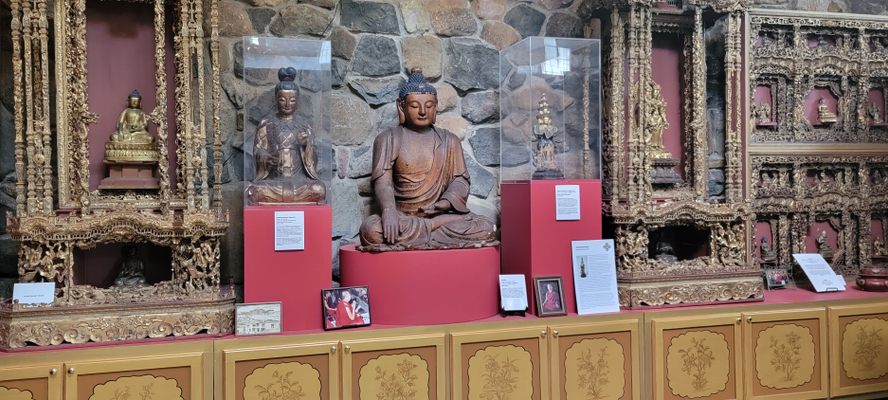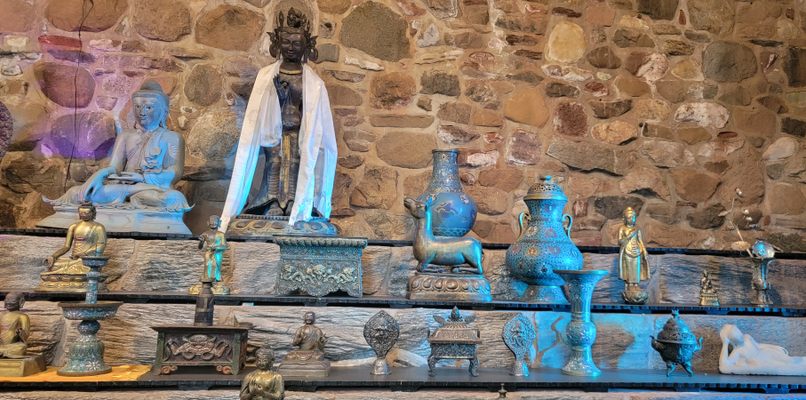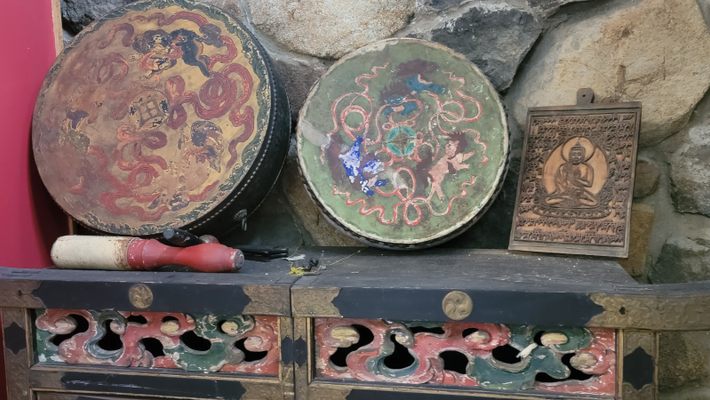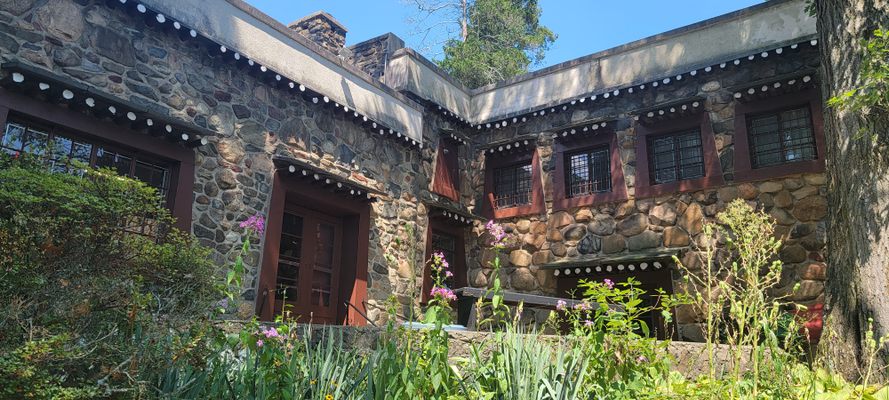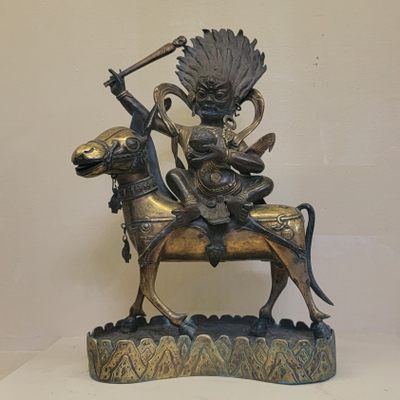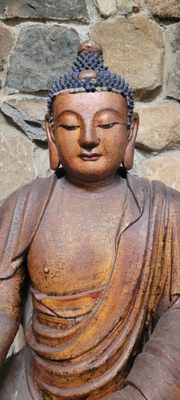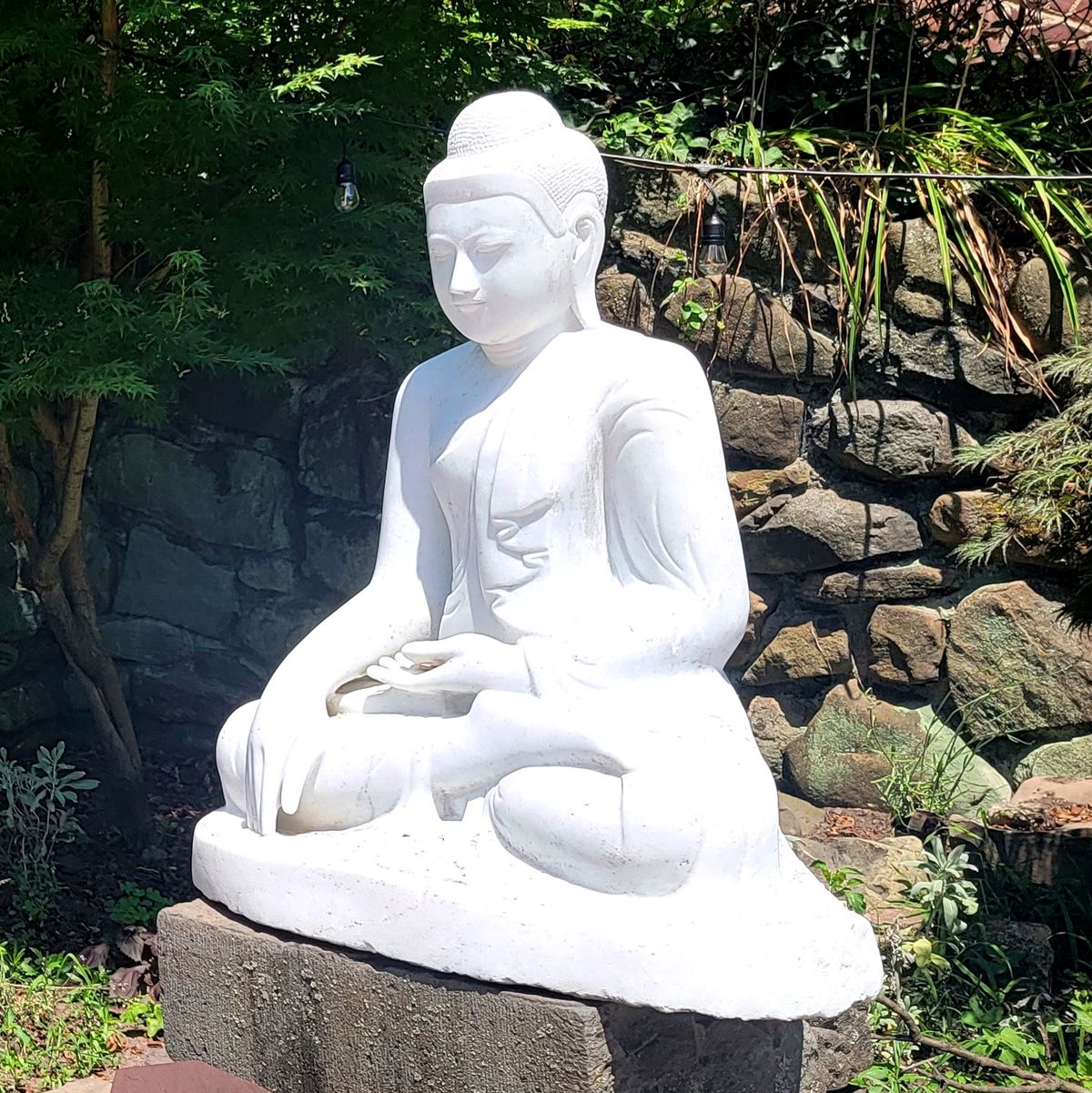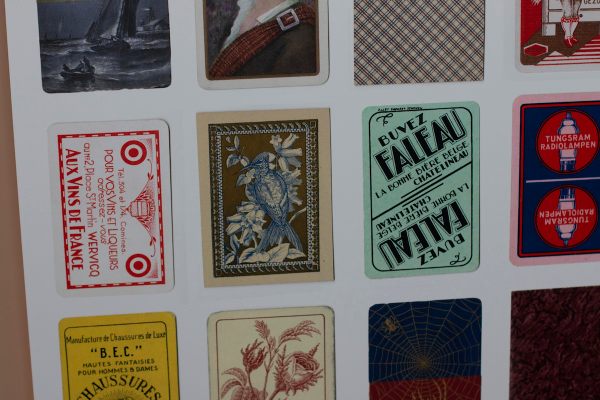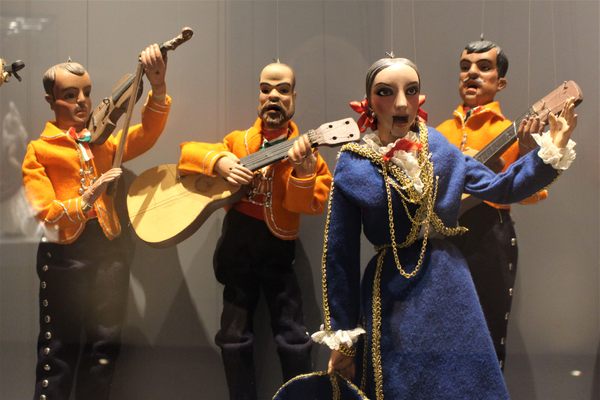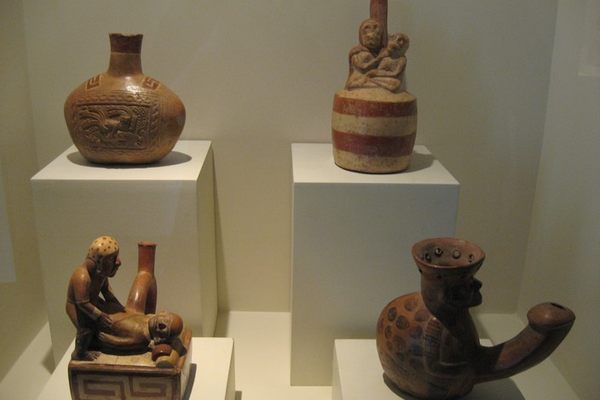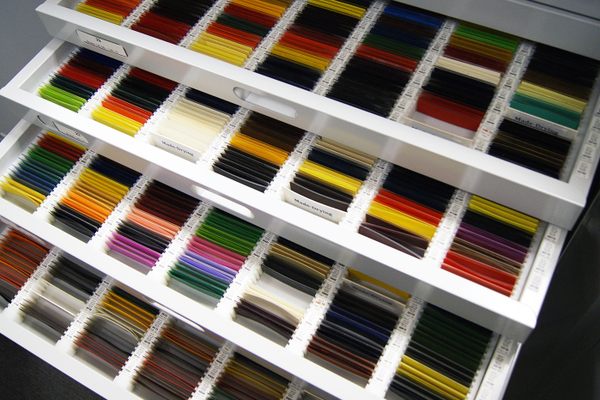About
The Jacques Marchais Museum of Tibetan Art is one of the earliest and most extensive collections of Himalayan art and artifacts. It was founded by Jacques Marchais, an American woman who led a remarkable life even before she dedicated herself to the research and study of Tibetan art and culture. Her father died when Marchais was young and she helped support the family financially as a child entertainer. She performed on stage as a teenager and adult. Marchais was married three times, eloping with her first husband at the age of 16.
Concurrent with her 1920 marriage to entrepreneur Harry Klauber, with whom she would spend the rest of her life, Marchais cultivated her interest in Central Asian art, amassed her collection, and constructed what she called the "Potala of the West."
Marchais engaged Joseph Primiano, a local stone mason, to construct the building. The two collected the fieldstone together around still-rural Staten Island. They based the design on photographs of the Potala at Lhasa, the historic seat of the Dalai Lamas, and other monasteries. Neither ever traveled to Tibet.
Terraced into the hillside are a library, chanting hall, meditation cells, and gardens with a lotus pond. The monastic complex, which opened to the public in 1947, features traditional details of Himalayan architecture; a flat roof capped with a pagoda, trapezoidal windows and doors with cross-cut wood posts, and slate caps.
Marchais collected over 2,000 books and the museum continues to add contemporary volumes on Tibetan art and culture. The printed material covers a wide range of subjects and a particular strength is early accounts of travel to Tibet. The collection of over 1,000 artifacts and works of art includes sculpture, ritual objects, musical instruments, scroll paintings, and furniture. Marchais collected 90 percent of the material but items continue to be added through donation. Only a small portion of the collection can be displayed at any one time, most of which is exhibited in the chanting hall.
The meditation cells and lower terrace cannot be visited at this time, although the latter can be viewed from above. The garden is especially beautiful when the rhododendrons and azaleas, which are native to Central Asia, are in bloom.
Related Tags
Know Before You Go
The Jacques Marchais Museum of Tibetan Art is most easily reached by car. There is limited free on-street parking. From the Staten Island Ferry terminal in St. George, take the S74 bus to Richmond Rd/Seaview Av, about a half-hour ride. The museum is then a 10-minute walk up Lighthouse Avenue. Admission is by donation.
Published
October 6, 2022
